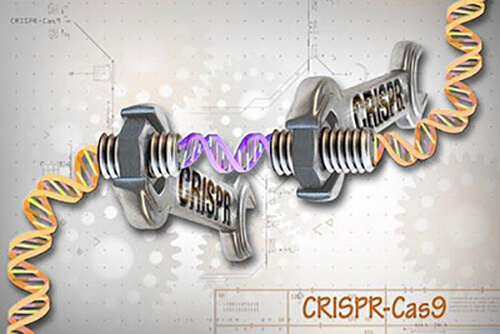



Business Inquiry
Global:
Email:marketing@medicilon.com
+1(781)535-1428(U.S.)
0044 7790 816 954 (Europe)
China:
Email: marketing@medicilon.com.cn
Tel: +86 (21) 5859-1500



The benefits of the CRISPR/Cas9 system for use in directly targeting mutations of genetic disorders have been reported widely over the past several years. However, another advantage of this genome-editing technique is the ability to utilize it as a screening tool for drug development—which is exactly what researchers from the Wellcome Trust Sanger Institute and their collaborators have done to find new therapeutic targets for acute myeloid leukemia (AML).

The investigators were able to identify a significant number of genes that could serve as potential targets for anti-AML treatments. Moreover, the Sanger team described how inhibition of one of the genes they found—KAT2A—destroys AML cells without harming nonleukemic blood cells. The findings from this new study were published recently in Cell Reports in an article entitled “A CRISPR Dropout Screen Identifies Genetic Vulnerabilities and Therapeutic Targets in Acute Myeloid Leukemia.”
AML is an aggressive cancer that proliferates to the point of crowding out healthy cells within the bone marrow—interfering with the bone marrow’s ability to make normal blood cells. Current AML treatments haven’t changed for decades, and fewer than one in three people survive the cancer.
To identify new ways to treat AML, the Sanger team used CRISPR/Cas9 gene-editing technology to screen cancer cells for vulnerable points, since this technology can be used to disrupt and destroy targeted genes in the genomes of cells. The investigators refined a CRISPR/Cas9 technique to disrupt all genes efficiently in the leukemia cell genome individually. This allowed them to identify those genes whose disruption was detrimental to the growth and survival of AML cells.
“Previous studies showed proof of principle, but this is one of the first systematic attempts to identify the genetic vulnerabilities of AML,” explained co-senior study investigator Kosuke Yusa, Ph.D., group leader at the Sanger Institute. “We have improved and applied CRISPR/Cas 9 technology to look at what actually kills cells. CRISPR is becoming a powerful technique in cancer research because it overcomes some of the limitations of earlier tools.”
While the human genome contains around 20,000 genes, refining the CRISPR/Cas9 system and using it to screen the leukemia genome, the team uncovered a catalog of approximately 500 genes that are essential for cancer cell survival, including more than 200 genes for which drugs could be designed. Although a handful of these genes, including DOT1L, BCL2, and MEN1, are already established therapeutic targets, most of the sequences the team identified are novel and open up many new possibilities for developing effective treatments for the disease.
In the current study, the researchers chose the KAT2A gene for further research. The inhibition of KAT2A using genetic and drug-based techniques revealed that disruption of the gene reduced the growth and survival of AML cells, but not of healthy blood cells.
“This is an exciting finding, as KAT2A inhibition worked on a number of primary AML cells with diverse genotypes,” noted lead study author Konstantinos Tzelepis, a graduate student at the Sanger Institute. “While the gene needs to be studied in greater depth to understand its potential for use in the clinic, we show that targeting KAT2A destroyed AML cells in the laboratory while sparing healthy blood cells.”
Using transgenic mice, the investigators further validated their findings, by disrupting the KAT2A gene within leukemia cells of the animals and observing the effects on their cancers. Remarkably, the scientists found that the mice lived significantly longer when the KAT2A gene was disrupted.
“This research has led to the identification of many potential gene targets for future AML therapy, which we are making available to other researchers to explore,” remarked co-senior study investigator George Vassiliou, Ph.D., joint project leader, and consultant hematologist at the Sanger Institute. “While KAT2A inhibition now needs to be investigated as a treatment strategy for acute myeloid leukemia, there are many more candidates to pursue by the leukemia research community. Our hope is that this work will lead to more effective treatments against AML that will improve both the survival and the quality of life of patients.”
 Relevant
news
Relevant
news